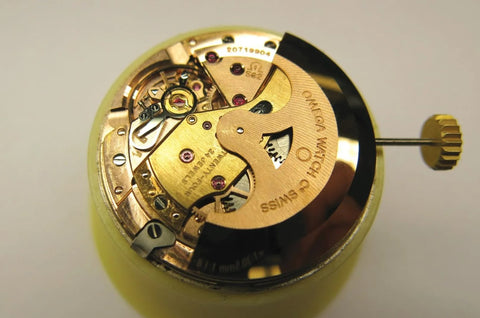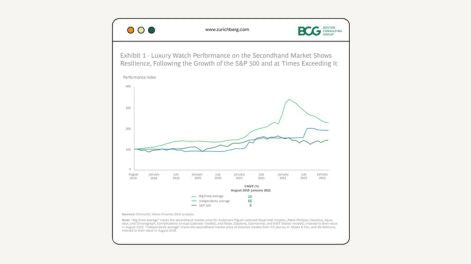How do I restore a vintage watch?
Like any well-loved item, whether it be a house, car, watch, or even a hip, consistent use can eventually require some TLC. However, with vintage watches, there is a correct and incorrect way to go about maintaining them if you wish to preserve their value. Proper care and maintenance can yield significant returns, as evidenced by the Knight Frank Wealth Report and its Luxury Investment Index (KFLII), which shows that watches are a lucrative investment that even outperforms the FTSE 100.
Mistakes made during the restoration process can result in significant decreases in value. That's why we enlisted the help of our head of horology, Flaviano Carrapa, to develop the optimal specifications for vintage watch restoration that preserves as much historical significance and value as possible. But this isn't merely theoretical advice; we put it into practice by having our own 1964 Omega Seamaster De Ville restored by the manufacturer's esteemed service department to showcase the best possible approach.
The crown
For a watch like our Omega, a missing winding crown can be compared to the exhaust port on the Death Star - it's a weak point that needs to be addressed, as external agents can damage the internal components. If the crown is missing, it's best not to wear the watch. However, as a temporary measure, almost any crown that fits can be installed. The advantage of this part is that if a non-original one is used, it can be easily replaced. New old-stock crowns for highly valuable watches, such as a £40,000 Rolex Daytona, can fetch high prices due to the value collectors place on such details. Thousands of brand new vintage-period spare parts are still lying around in old watchmakers' workshops due to the way watch parts were sold. If you were a watchmaker and needed components, you had to buy them in threes because material dealers didn't consider it worthwhile to sell them individually. After the watch was repaired, the two spare components would have likely been kept in storage, as a precautionary measure. However, these parts are often not catalogued or organized in any particular manner. Occasionally, they may appear for sale on websites such as eBay, the watch collector site Chrono24, or in obscure listings like Dashto.

The glass
For particularly rare or significant watches, where every blemish tells a tale - such as the Rolex & Smiths watches that conquered Mount Everest or the Omega Speedmasters worn on the moon - even severely scratched glass should be left intact to maintain their iconic status. The shape of vintage watch glass was often modified by manufacturers from one era to the next, and as the watch gains importance, such details become increasingly crucial. However, if you own a decent, uncomplicated vintage watch that you want to use regularly, it's recommended to replace a badly damaged glass to safeguard the interior, and this won't have any negative impact on its value.

The movement
If the watch is in working condition, it should at least be cleaned. The service department will take apart the entire movement, clean each part with ultrasound and replace them if necessary. Replacing internal parts will only impact the watch's value if it is an iconic piece, so there is no need to worry if the service department recommends replacing a component like the mainspring that is prone to wear. In fact, some manufacturers such as Rolex require the mainspring to be replaced during every service. However, there are exceptions to this rule. It would be a mistake to replace components of iconic watches, even if it restores its functionality. Many antique watches had steel mainsprings that were signed by the maker, and discarding them would greatly compromise their value.

The old parts
It is recommended to request the old components back after a watch has been serviced. In many cases, a Ziploc bag containing the replaced parts is provided, which allows for historical elements to be preserved and shows what has been replaced. However, some manufacturers like Rolex will not return the parts to the customer to prevent a secondary market of used parts. On the other hand, Omega will return the parts. It is important to exercise judgment when deciding whether to keep the parts or not. For instance, if a bag of rusty metal is returned, it may suggest that the watch has had a rough life, which could decrease its value when resold. Conversely, watches from the 1920s may have included spare parts such as mainsprings and glasses, and these rare finds should be kept with the watch.

The dial
The movement of a watch may not affect its value much even if parts are replaced, as long as they meet the manufacturer's standards. However, the external appearance is where the value lies. Imperfections that show aging can add value to a vintage watch, so it's best to avoid restoring a distressed dial. This is because a dial is a delicate painted surface that cannot be invisibly repaired without repainting the entire thing. Therefore, it's important to specify that the dial should not be restored. If there is any damage that affects the underlying surface, it's best to leave it as is.

The hands
The manufacturer may suggest replacing the hands, but this is subjective - as long as the original hands have some patina, they are still appropriate for the watch. It is unlikely to find replacement hands that are historically accurate, and there may be subtle differences in details like the taper or tip that will be noticeable to a trained eye, causing a decrease in value. "Ultrasonic cleaning is sufficient to remove dirt from plain metal hands, but attempting to polish them to remove scratches is risky as they are delicate. Restoration of luminous hands is an absolute no-go. The paint used to make them glow in the dark cannot withstand cleaning solutions. It is best to request that all hands remain untouched.

The bezel
In the world of watches, a faded bezel is often considered attractive due to the evidence of age and character it provides. However, a replacement bezel insert may have a negative impact on the value of the watch. For instance, a vintage Rolex Submariner with an original dial and hands but a newer replacement bezel insert may take longer to sell compared to one with a faded, original bezel insert. Collectors who prioritize authenticity often go to great lengths to find old, faded bezels that are a better match for their watches.

The case
Over-polishing a watch is the quickest and most common way to devalue it, and it cannot be undone. To achieve a high shine, you have to remove metal with abrasive polishing compounds and a buffing wheel, which removes a thin layer of metal. Good watch-case polishing is a specialist skill possessed by very few watchmakers, entirely different to watch repair. A common phenomenon is that a watch will return from restoration completely rounded-off. The lugs that hold the strap onto the Omega are very square - if you hold those edges to a buffer for too long they will be softened and their shape ruined. Over-polishing can also ruin the integrity of water resistance and even stop the watch from closing properly. Omega has a dedicated polishing department manned by specialists. That said, with vintage watches, always specify that polishing is kept to a minimum and is sympathetic. Every little scratch does not need to be erased.

The strap
Metal bracelets can be easily cleaned using ultrasonic cleaning, but when it comes to leather straps, things are a bit more complicated. If you acquire a watch in new old-stock condition, it's best to remove and store the strap. However, in most cases, the leather strap would have been replaced several times, as they tend to wear out quickly, and are often considered to be a consumable item. If the strap is an old original one, it's best to ask for it to be returned. Additionally, it's important to keep an eye on the buckle, as it can be transferred between straps. If it's an older example, it should be rescued and used with the original strap.

How to communicate
It is crucial to document all instructions in writing. Even if you verbally express your preferences, they may not be accurately conveyed down the line to the service center staff who handle your watch. Without written instructions, there is a high chance that your requests will be forgotten or overlooked. Furthermore, if any components are replaced during the service, the original parts may not be returned to you. Therefore, it is vital to have all instructions and agreements in writing to ensure that your vintage watch is restored to your satisfaction.



Hinterlassen Sie einen Kommentar